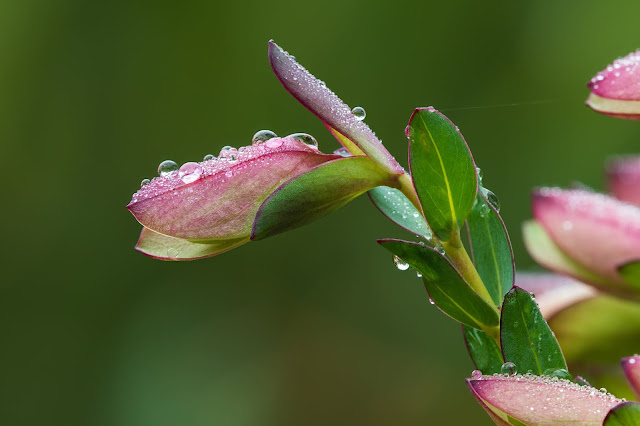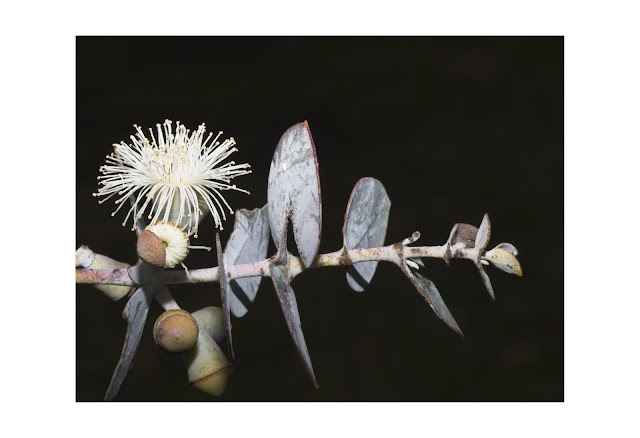Photography | Brian Rope
RECOVERY
| Various Artists
ANBG Visitors Centre Gallery | 25 November – 12
December
Recovery is the eighth annual photographic exhibition by the Friends of the Australian National Botanic Gardens Photographic Group.
This year there are four categories of images. Firstly, there are plant portraits of a single plant, or group of primarily the same species. Then there are wildlife images (in the Gardens, but also outside due to access restrictions this year). Next there are creative compositions of banksia plants in recognition of Joseph Banks’ visit to Australia and the new banksia garden. And, to complete the show, images of rare, threatened or endangered plants. In total there are forty-eight prints by twenty artists, all framed in a light-coloured timber and, so, the overall exhibition looks cohesive.
The exhibition successfully displays in print aspects of our beautiful natural environment through the camera lens - and on screen with revolving images of plants, birds and animals in the ANBG.
There are just three monochrome prints on display, all by the same author - Ulli Brunnschweiler. They stand out amongst the colour works, not just because they are black and white but also because they are quite lovely works each showing plants (plural). In particular, Acacia pravissima, hung at the top of the three works here is just delightful. Commonly known as the Ovens or Tumut wattle, this is an acacia with which we are all familiar. But generally, we see it in yellow and green.
 |
Ulli Brunnschweiler - Acacia pravissima |
Amongst the colour works the standouts for me include David Bassett’s Feeding Gang-Gang and Imperial Jezabel. This Queanbeyan author’s nature imagery – indeed all his varied artworks - are consistently excellent and these are no exception.
 |
David Bassett - Imperial Jezabel |
Local
professional and photography teacher Irene Lorbergs has contributed several
fine prints - Honeyeater and Macrocarpa, Bee and Flower, and Banksia.
The latter is suggestive of a delicious tasting cupcake.
 |
Irene Lorbergs - Banskia |
Pam Rooney’s winning Woolly Banksia image superbly displays what can only be described as delicate tracery.
 |
Pam Rooney - Woolly Banksia |
Bill Hall’s vulnerable Thick-lip Spider Orchid shows great detail and makes excellent use of complementary colours. Steve Playford’s Bejeweled Qualup Bell does the same with virtually identical colours.
 |
Bill Hall - Thick-lip Spider Orchid |
 |
Steve Playford - Bejeweled Qualap Bell |
Graham Gall’s Juvenile Male Satin Bowerbird shows the bird’s soft, mostly green and brown, colours amongst similar greens and browns of the foliage. The rich blue of the bird’s eye is striking and commands attention.
 |
Graham Gall - Juvenile Male Satin Bowerbird |
Jim Gould’s Baby Blue Flowers is a visually pleasing selection of a small piece of a silver-leaved mountain gum, clearly showing viewers how its flowers bud in groups of three; white flowers and cup-shaped to cylindrical fruit.
 |
| Jim Gould - Baby Blue Flowers |
All the prints are worthy of close examination, and I encourage readers who can do so to visit and see for themselves.
Both framed works and unframed prints are for sale. Unique gifts of cards, calendars, photo bags and more are also on display and available for purchase. A percentage of sales go to the Friends for projects in the Gardens.
Visitors can also check out the 2022 Calendar that is available in the bookshop; all images produced by the Photographic Group members.
The exhibition supports and raises awareness of the aims and values of the ANBG and highlights the Gardens’ wide-ranging diversity of flora and fauna through the medium of photography. The participating members of the Photographic Group should be pleased and proud of their contributions.
Any reader who would like more information on the Photographic Group should email photo@friends.org.au. The Group encourages potential speakers and new members.